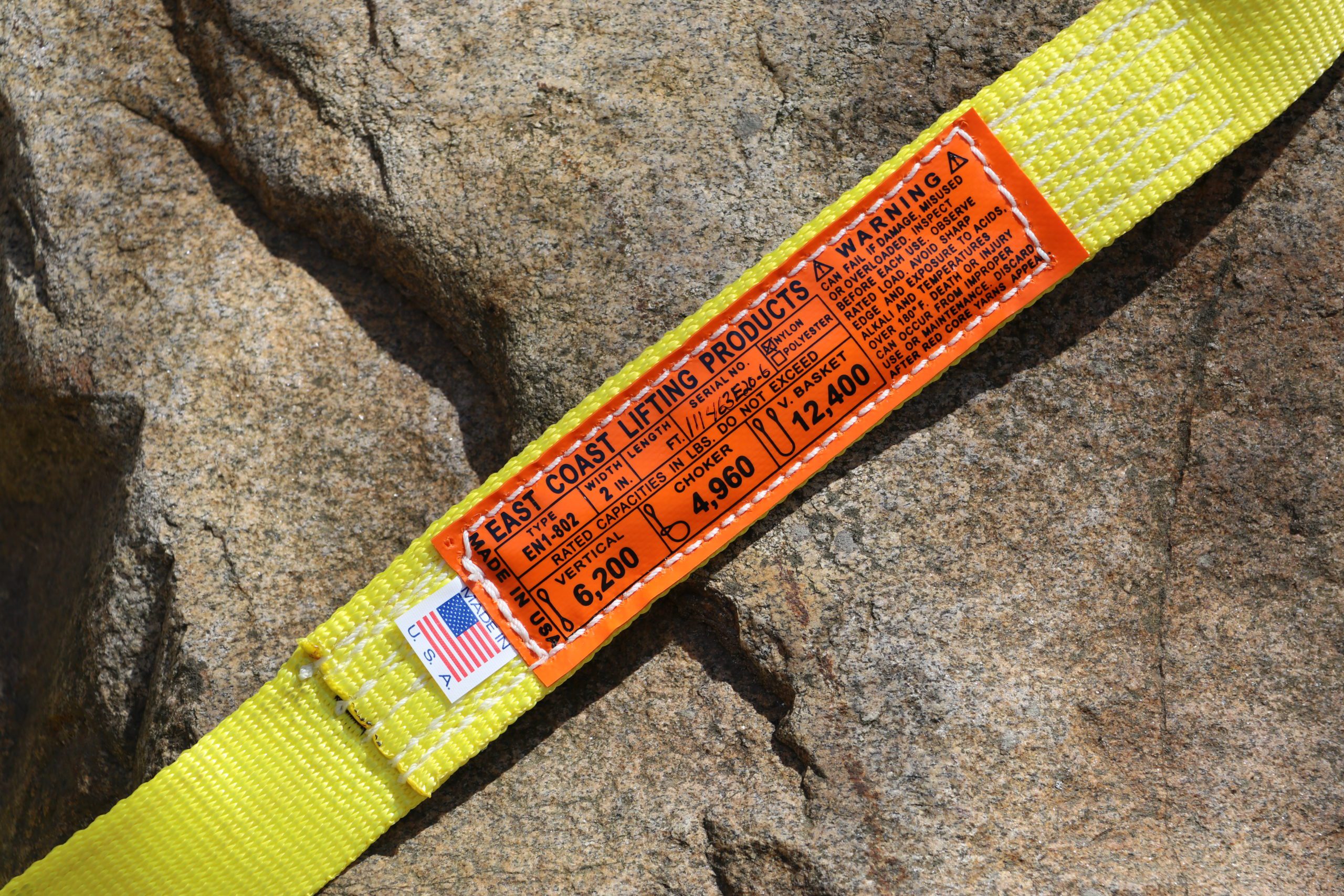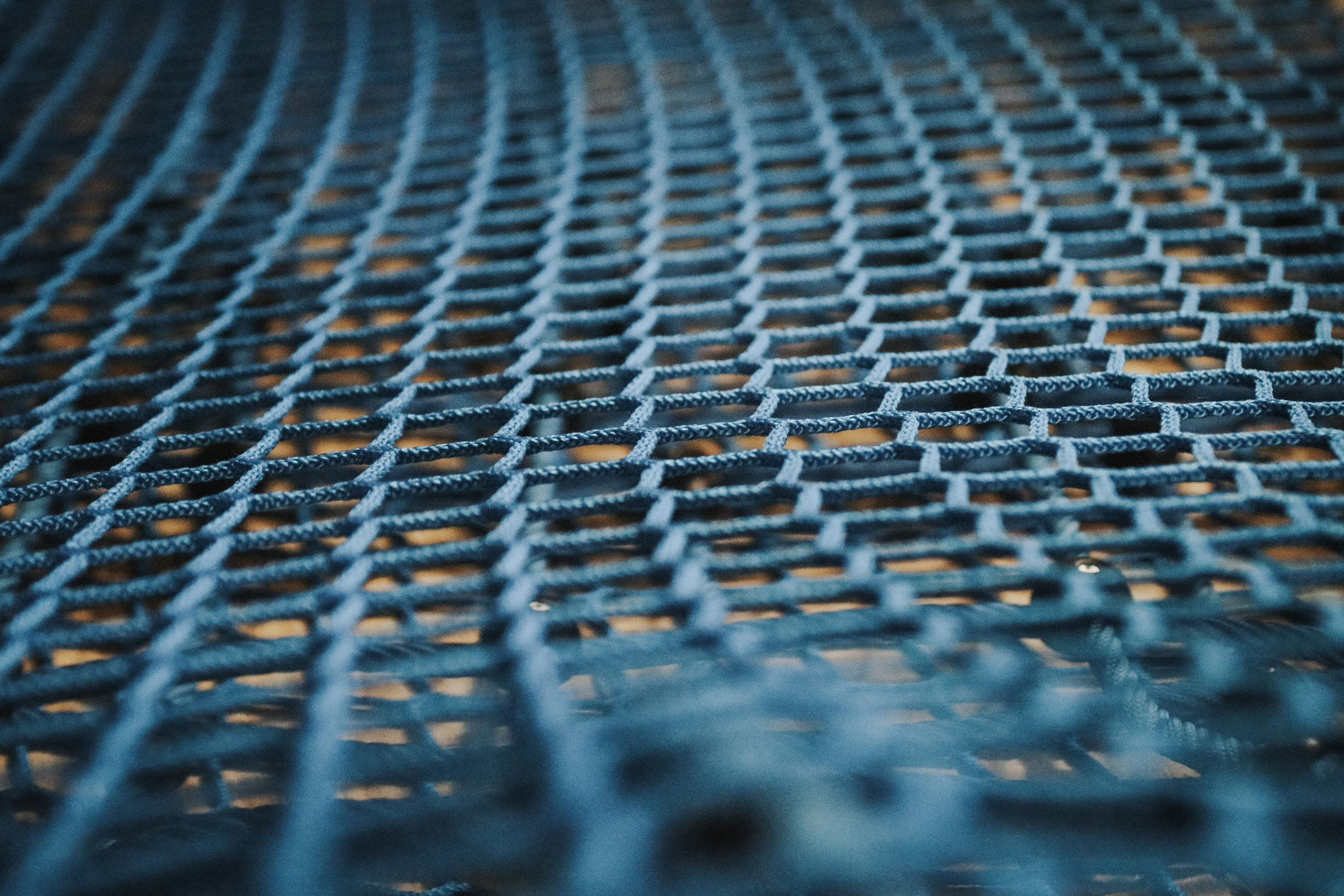ECLP Rigging Slings: Selection, Safety, and Inspection

Rigging Slings: Selection, Safety, and Inspection
April 2021
Slings are indispensable tools to have on the construction job site. They are popular for their strength, convenience, load protection, and economy compared to other rigging methods. Slings offer a helping hand for virtually every application. Today, we’ll explore three key aspects of sling use including selection, understanding causes of failure, and routine inspections.
Sling Selection
It’s critical to select the right sling for the task at hand. This is where the sling’s label comes in. The label indicates important factors such as sling type, strength rating, length and material. Here’s what the label is telling you:
(*Note: labeling follows a standard protocol across all manufacturers, though materials might change slightly. For exact definitions, please consult the supplier or original packaging.)
Hitch Types
The type of hitch is another main factor for selection. They are classified into three categories as follows:
- Choker – chokes up on the load. It has the lowest load rating.
- Vertical – hook to one eye and crane to the other eye. This configuration has a moderate load rating.
- Vertical Basket – cradle and both eyes attached to the crane. This offers the highest load rating.
Sling Angle is another key factor for sling selection. It is measured between the horizontal plane and the sling leg or body. It can have a dramatic effect on the rated capacity of the sling due to the increase of tension caused by the angle.
Understanding Causes of Failure
Of course, you’ll want to get the longest life out of your sling. But you must be sure that a sling maintains its integrity to do the job. They will fail if they are damaged, misused or overloaded. Environmental conditions are also major factors in determining longevity. Exposure to UV light, certain chemicals and other factors such as temperature and humidity can result in accelerated deterioration of web slings. Both nylon and polyester are seriously degraded at temperatures over 200°F. Avoid sharp edges and exposure to acids and alkalis. Be certain to observe the rated load to avoid overloading.
Inspection
Slings should be inspected prior to each use. Every time. No excuses! Otherwise, you could be subjecting people to serious injury or even death. It’s common practice to assign a designated team member to carry out the inspections.
Always inspect the entire sling carefully. Look for any tears or other signs of distress. Discard if red core yarn is visible. Here’s a handy checklist of what to look for, compliments of OSHA:
- Missing or illegible sling identification,
- Acid or caustic burns,
- Melting or charring of any part of the sling,
- Holes, tears, cuts, or snags,
- Broken or worn stitching in load bearing splices,
- Excessive abrasive wear,
- Knots in any part of the sling,
- Discoloration and brittle or stiff areas on any part of the sling,
- Pitted, corroded, cracked, bent, twisted, gouged, or broken fittings, and
- Other conditions that cause doubt as to continued use of a sling.
If any of these are observed, take the sling out of service immediately and have it replaced.
Slings are very helpful to have for various rigging applications at any construction site. Please make sure you follow these guidelines to be sure you are selecting the right one for your application. Always inspect your slings to ensure safety, and protect them from harsh conditions to keep them lasting a long time.
For more important product information and to see East Cost Lifting Product’s full lifting and rigging selection, see our online catalog. On job sites big or small, InCord’s custom-crafted safety netting solutions keep you on schedule and in compliance. Also available from InCord is East Coast Lifting Products. American-made synthetic slings, round slings, and tie‐downs.
For more information, email Sales Manager, Daniel Peloquin or call directly at 860.531.3311.
InCord’s Safety Netting Solutions
860.537.1414 or email netting@incord.com
A leader today and tomorrow.
In 2020, InCord was recognized by its employees and was awarded the Top Workplace by the Hartford Courant for the tenth consecutive year.
InCord provides custom netting solutions for Material Handling, Construction, Amusement, Sports, Theatre, Service Pits (BayNets™), Specialty, and Environmental/Ecological Restoration markets. InCord’s custom solutions meet or exceed applicable safety standards due to consistent research, testing and direct involvement with renowned safety organizations, such as ANSI, OSHA, and ASTM. InCord also offers in-house design, installation and extraordinary customer service for a complete, turn-key experience. Green Bureau Certified Platinum



